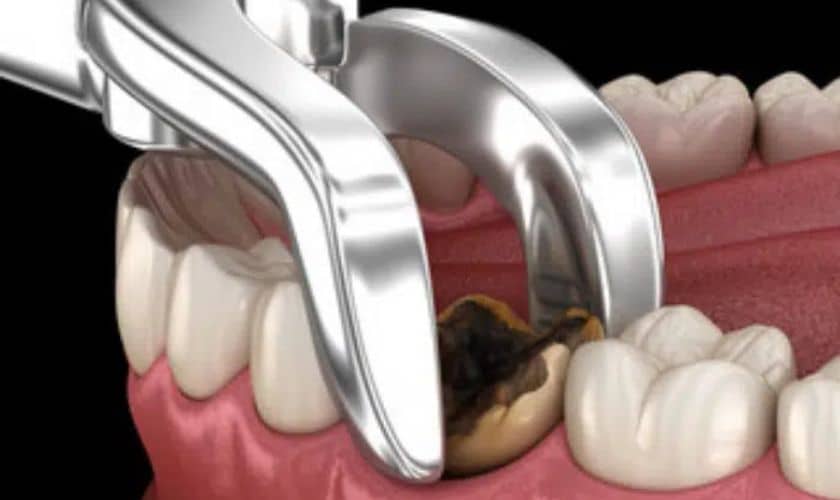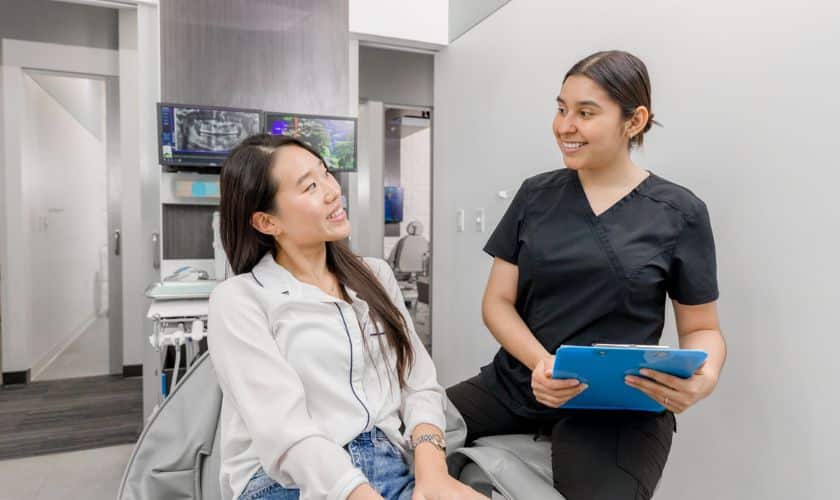Pearl Dental Blog

What To Eat After Tooth Extraction?
Welcome to our blog post on what to eat after tooth extraction! Whether you’ve just had a wisdom tooth removed or underwent a more extensive dental procedure, proper nutrition plays a crucial role in your recovery. While it may be tempting to indulge in your favorite comfort foods, it’s important to choose the right foods that won’t disrupt the healing process or cause unnecessary pain. In this article, we will guide you through the dos and don’ts of post-tooth extraction eating, providing you with delicious and nutritious options for a smooth recovery. So let’s dive in and discover what foods are best suited for this delicate period!
Understanding Tooth Extraction
Tooth extraction is a dental procedure where a tooth is removed from its socket in the bone. This may be necessary for various reasons, including severe decay, infection, overcrowding, or to prepare for orthodontic treatment. While it may sound daunting, tooth extraction is a common and often necessary procedure performed by dental professionals.
During the extraction process, your dentist will administer local anesthesia to numb the area around the tooth. Once you’re comfortable and numb, they will use specialized tools to loosen and remove the tooth from its socket carefully. In some cases, stitches may be required to close the gum tissue after extraction.
After the procedure, it’s normal to experience some discomfort and swelling in the affected area. Your dentist will provide instructions on how to care for your mouth during recovery and prescribe pain medication if needed.
It’s important to note that each patient’s experience with tooth extraction can vary depending on factors such as age, overall health condition, and complexity of the extraction. It’s always best to consult with your dentist beforehand so they can assess your specific situation and provide personalized advice.
Remember that proper oral hygiene during recovery is crucial! Be gentle when brushing your teeth but continue doing so regularly (avoiding the surgical site). Rinse gently with saltwater solution after meals or snacks to keep bacteria at bay.
Now that we have a better understanding of what tooth extraction entails, let’s delve into why proper nutrition post-extraction plays an integral role in ensuring a smooth recovery journey.
The Importance of Proper Nutrition After Tooth Extraction
Proper nutrition plays a crucial role in the healing process after tooth extraction. It helps to promote tissue regeneration, reduce inflammation, and prevent infection. By providing your body with the right nutrients, you can ensure a faster and smoother recovery.
After tooth extraction, it is important to focus on foods that are soft and easy to chew. This will help minimize discomfort and avoid any damage to the surgical site. Soft foods such as yogurt, mashed potatoes, soups, smoothies, and protein shakes are excellent options during this time.
In addition to soft foods, it is essential to maintain a balanced diet by incorporating fruits and vegetables into your meals. These nutrient-rich foods provide vitamins A and C, which aid in collagen production and promote healing. Opt for softer options like cooked vegetables or pureed fruits if chewing is still uncomfortable.
Recommended Foods for the First Day After Surgery
After undergoing tooth extraction surgery, it’s important to give your body the nutrients it needs to heal and recover. During the first day after surgery, you’ll want to stick to soft foods that are easy to chew and won’t irritate the surgical site.
One option is scrambled eggs, which provide a good source of protein without requiring much effort from your teeth. You can also try mashed potatoes or pureed soups for added comfort. Yogurt or pudding can be a great choice as well, offering both nutrition and a soothing texture.
If you’re in the mood for something more substantial, opt for cooked pasta or rice that has been softened. Be sure not to add any spicy sauces or hard-to-chew ingredients.
In addition to these options, it’s crucial to stay hydrated during this time. Drinking plenty of water will help flush out any toxins from medication and keep your mouth clean.
Remember, everyone’s recovery process is unique, so pay attention to what feels comfortable for you. If anything causes pain or discomfort while eating on the first day after surgery, stop consuming it immediately and consult with your dentist.
By following these recommendations for foods on the first day after tooth extraction surgery, you will promote healing without compromising your comfort levels.
Soft Foods to Eat During Recovery
During the recovery period after tooth extraction, it is important to choose foods that are soft and easy to eat. These types of foods provide the necessary nutrients while minimizing discomfort and potential damage to the surgical area.
One option for soft foods during recovery is soup. Warm broth-based soups are not only comforting but also gentle on your mouth. Opt for smooth, pureed soups or strain any chunky ingredients if needed.
Another great choice is mashed potatoes. They are not only easy to chew but also packed with essential vitamins and minerals. Consider adding some butter or sour cream for added flavor and a creamy texture.
If you’re looking for something sweet, try yogurt or pudding. These creamy treats can be enjoyed without putting too much pressure on your healing gums. Just remember to choose options without seeds or small fruit pieces that could get stuck in the extraction site.
For those craving protein, scrambled eggs are an excellent choice. They can be cooked until they reach a soft consistency, making them easier to consume while still providing valuable nutrients like protein.
Smoothies can be a refreshing option during your recovery period. Blend fruits, yogurt, milk (or alternative milk), and ice for a nutritious drink that requires minimal chewing.
Foods to Avoid After Tooth Extraction
When it comes to foods to avoid after tooth extraction, there are a few key things to keep in mind. First and foremost, you’ll want to stay away from anything hard or chewy. This includes things like nuts, chips, and tough meats.
Additionally, it’s important to steer clear of any hot or spicy foods. These can irritate the surgical site and slow down the healing process. So while you may be craving that fiery curry or piping hot soup, it’s best to hold off for now.
Another category of foods you should avoid is anything acidic or citrus-based. This means saying no to oranges, lemons, and tomatoes for the time being. Acidic foods can cause discomfort and even delay the healing process.
Try your best to resist the temptation of indulging in sugary treats or drinks. Sugar can interfere with proper healing by promoting bacterial growth and inflammation.
During your recovery period after a tooth extraction procedure, it’s crucial to give your body what it needs – nourishing foods that won’t hinder the healing process. By following these guidelines on what not to eat after tooth extraction surgery will increase your chances of a smooth recovery without complications.
Tips for Eating Comfortably During Recovery
1. Take smaller bites: While you may be tempted to indulge in your favorite foods, it’s best to take small, manageable bites during the recovery period. This will help prevent any discomfort or strain on the healing area.
2. Chew on the opposite side: If possible, try chewing your food on the side of your mouth that is unaffected by the extraction site. This will minimize pressure and reduce any potential pain.
3. Opt for softer textures: Choose soft foods that require minimal chewing to make eating more comfortable. Soups, mashed potatoes, yogurt, and smoothies are all great options that won’t irritate your healing gums.
4. Avoid hot foods and drinks: Heat can increase blood flow to the extraction site and potentially prolong bleeding or cause irritation. Stick to cool or lukewarm foods and beverages instead.
5. Use utensils wisely: When eating with utensils like spoons or forks, take extra care not to hit or scrape against the surgical area accidentally.
6. Rinse gently after meals: After eating, rinse your mouth gently with a warm saltwater solution (made by dissolving half a teaspoon of salt in eight ounces of water). This will help keep the area clean without causing further irritation.
Proper nutrition is crucial for a healthy recovery after tooth extraction. By following the recommended guidelines and choosing the right foods, you can help promote healing and minimize discomfort during this delicate time.
Remember to start with soft foods immediately after surgery, such as mashed potatoes, yogurt, and soup. As your mouth heals, you can gradually introduce more solid but still gentle options like scrambled eggs or pasta. Be sure to avoid hard or chewy foods that could disrupt the healing process.
Eating comfortably during your recovery period is essential. Take small bites and chew slowly and carefully on the opposite side of your mouth from where the extraction took place. Use a straw if necessary to prevent any suction that may dislodge blood clots.
If you have any concerns about what to eat after tooth extraction or experience prolonged pain or complications during your recovery period, consult with your dentist for further guidance.
Remember: every individual’s healing process is unique; listen to your body’s cues and adjust accordingly. With proper care and attention to nutrition, you’ll be back enjoying all of your favorite meals in no time!





